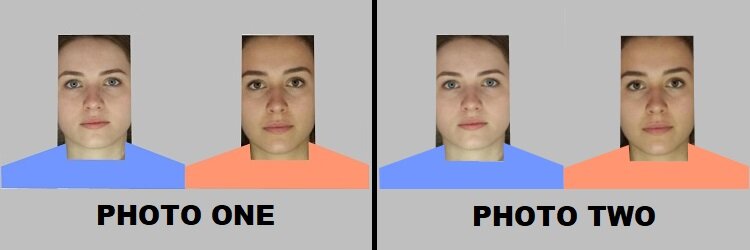Scientists at the University of St Andrews have finally proved what every discerning fashionista knows—a person’s complexion determines the color of clothing that suits them.
New research, led by the School of Psychology and Neuroscience at the University of St Andrews and published in the journal Perception/i-Perception (Monday 15 November) reveals that people have strong preferences for red and blue clothing, favoring blue hues to match fair skin and ‘warm’ orange/red hues to match tanned skin.
Everyone wants to look their best, but what should guide the choice of clothing? There is extensive fashion stylist advice on clothing colors according to personal categories that depend on skin, hair and eye color, however, these categories have not been defined scientifically and advice is inconsistent across different stylists. These problems may explain why there has been no systematic study of whether certain colors are more suited to particular people. The new study used differences in skin tone which are easy to see and measure as the basis of defining clothing color choice.
Lead scientist for the study, Professor David Perrett, from the School of Psychology and Neuroscience, said: “Our study used 12 facial images of white women captured under standard lighting: six were fair skinned, six were more tanned. Measurements confirmed that the tanned group had skin that was darker and more yellow, reflecting higher levels of the skin pigment melanin.
“We recruited 160 participants to provide their opinions on what colors suited the different faces. Using custom software, participants could alter the color of simulated clothing to suit each of the 12 target faces. We gave participants a whole spectrum of colors to choose from. In addition, the colors could be adjusted in brightness or in saturation (vividness).
“Despite the complete range of hues available, participants tended to focus their choice on blues and orange/reds. To our surprise there was also was good agreement from the public about which colors went best with which complexion—75% of participants thought blue hues looked better on women with a fair complexion while orange/reds were selected for women with a darker complexion.”
Dr. Reiner Sprengelmeyer, from the School of Psychology and Neuroscience, who had the idea to examine the match between skin color and clothing color, commented: “Clothing is important to self-esteem and psychological health. Finding out rules that help people look their best is therefore important. Indeed, the global fashion industry is worth trillions of dollars, and color is a major factor in choice of garments.”
The study provides the first scientific evidence that complexion is a basis for the esthetics of clothing color. The research team speculate that color matching comes from the association in people’s minds between warm climates and a darker complexion, and reciprocally between cool northern climates and a fair complexion. People unconsciously associate ‘cool’ (blue) colors with a cool climate and hence may choose blue for fair skinned individuals. Further research is required to test this idea. Future studies will also attempt to introduce more realism into clothes and extend the cultural basis of assessment.
More information:
David Ian Perrett et al, Clothing Aesthetics: Consistent Colour Choices to Match Fair and Tanned Skin Tones, i-Perception (2021). DOI: 10.1177/20416695211053361
Provided by
University of St Andrews
Citation:
Complexion is a basis for the aesthetics of clothing color choices (2021, November 17)



